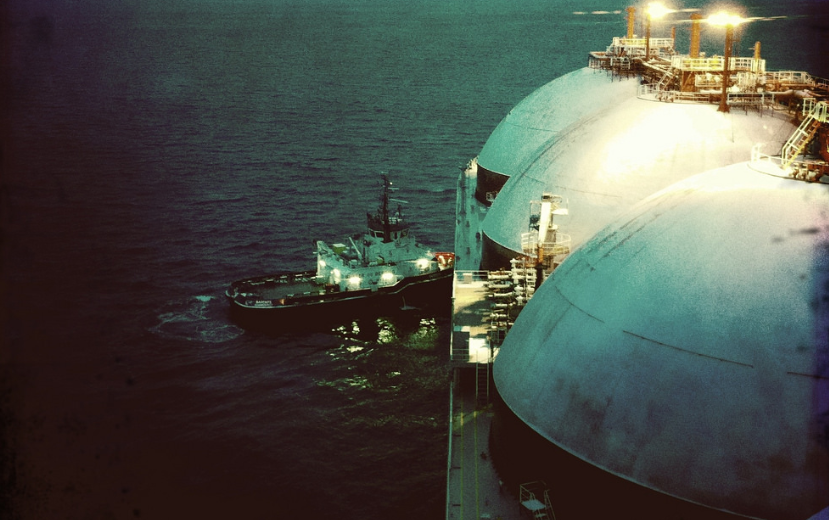Grasping the opportunity of LNG 2.0
Posted By Vlado Vivoda on July 6, 2017 @ 06:00

How natural gas is bought and sold in the world’s scattered regional markets for the fuel is changing rapidly. A single global market for natural gas has finally arrived [1]. Behind the evolution is improving technology for moving gas as a liquid, which means it can go to many more places rather than simply where a pipeline runs. In addition, an oversupply of gas has producers working to develop new consumers all over the world. The result is growing flexibility in previously rigid gas contracts and a global convergence in prices.
The share of gas traded by sea as liquefied natural gas (LNG) reached close to 40% of total trades in 2016. The US Energy Information Administration’s International Energy Outlook forecasts [2] that seaborne gas will account for a bigger share of trading than pipelines by 2040. 39 countries now import LNG [3], up from 17 a decade ago. Several more are expected to lift the total to 46 in the next couple of years.
When global trade in LNG began in the 1960s, the cost of liquefying gas was so high that it was affordable only to developed countries such as Japan. As the technology proved reliable, LNG trade expanded, but contracts remained decades long and had non-negotiable destination clauses. Contracts are now getting shorter and starting to allow gas to be diverted to where demand is greatest.
The first week of June was momentous for global LNG trade. Several key developments demonstrate the transformation in global gas markets. During the first week of June, the first two US LNG cargoes to reach northern Europe have landed in Poland and the Netherlands [4]. The gas came from an export terminal in Louisiana that was first out of the gate in February 2016 to exploit the US shale boom [5] to supply the global market. This was the first-time US LNG exports landed in the liquid hubs of northwest Europe or elsewhere in northern Europe, faced with competition from domestic supply and cheap imports from Norway and Russia.
The entrance of the US onto the global LNG market is a game-changer. US LNG is a crucial way to buffer the rising influence of Russia, the largest gas exporter in the world by some margin, which supplied more than one-third of Europe’s gas last year. Seaborne gas is reducing some countries’ historic dependence on pipelines that run through potentially unfriendly territory. Poland, for instance, opened its first import terminal a year ago, lessening its reliance on gas piped from Russia. By importing US LNG, Poland just took a symbolic step forward in wresting itself from Russia’s energy dominance [6].
The US is also capitalising on the long struggles of Russia to supply large amounts of energy to China because the two countries have been unable to agree to prices. In late May, the US and China have announced the initial steps in their 100-day action plan of the Comprehensive Economic Dialogue, inviting Chinese companies to negotiate long-term LNG contracts [7] from US suppliers. US supplies reaching Asia are now more practical thanks to the June 2016 expansion of the Panama Canal that lowers shipping times and prices. The agreement piles pressure on competing suppliers, including new LNG projects in Australia as well as new pipeline and LNG projects from Russia.
The timing of US LNG entry into the global market couldn’t be worse for Australia’s prospects, for example for the $54 billion Gorgon project, the world’s most expensive. Australia’s energy and resources minister Josh Frydenberg acknowledged [8] that oversupply and low prices would hurt LNG returns, but said prices would not stay low forever: ‘the LNG projects currently under construction in Australia are being developed on the basis of a long term outlook, with 40-year average project life spans.’
Over the longer term, Australia is well-positioned to reap benefits from the flexible global gas market. Facilitated by Asian investment, Australian LNG export capacity increased significantly over the past few years and will continue to increase as new projects are brought on line. Australia is forecast to rival Qatar [9] as the world’s largest LNG exporter by 2021.
Gas buyers see Australia as a highly reliable LNG supplier and one that supports open and transparent international markets. With European energy security strategy aimed at diversifying away from Russian supplies, Australia seems a logical new option. According to its LNG strategy [10], the European Union aims to step up efforts to cooperate closely with future suppliers, such as Australia, to remove obstacles to the trading of LNG on global markets. For European consumers, a diversification strategy aimed at securing long-term contracts from stable suppliers and political allies can provide a valuable insurance policy against the potential loss of Russian supplies over the longer term.
Article printed from The Strategist: https://aspistrategist.ru
URL to article: /grasping-opportunity-lng-2-0/
URLs in this post:
[1] has finally arrived: http://www.theaustralian.com.au/business/mining-energy/global-market-for-natural-gas-has-finally-arrived/news-story/095ba2d529c4accf08f992067a5795db?nk=4f6a33a918a5b21ecb705733d9688d50-1497746829
[2] forecasts: https://www.eia.gov/outlooks/ieo/nat_gas.php
[3] now import LNG: http://www.giignl.org/sites/default/files/PUBLIC_AREA/Publications/giignl_2017_annual_report_0.pdf
[4] have landed in Poland and the Netherlands: https://www.platts.com/ShippingNews/26750054
[5] US shale boom: https://pgjonline.com/2017/06/08/americas-unstoppable-lng-boom/
[6] wresting itself from Russia’s energy dominance: http://foreignpolicy.com/2017/06/08/first-u-s-natural-gas-shipped-to-poland/
[7] negotiate long-term LNG contracts: https://www.forbes.com/sites/judeclemente/2017/05/25/u-s-liquefied-natural-gas-to-china-is-a-game-changer/#1e956000671a
[8] acknowledged: http://www.reuters.com/article/us-australia-lng-gorgon-idUSKCN0VY0OY
[9] forecast to rival Qatar: https://www.iea.org/bookshop/721-Medium-Term_Gas_Market_Report_2016
[10] LNG strategy: http://www.eesc.europa.eu/?i=portal.en.ten-opinions.39038
Click here to print.